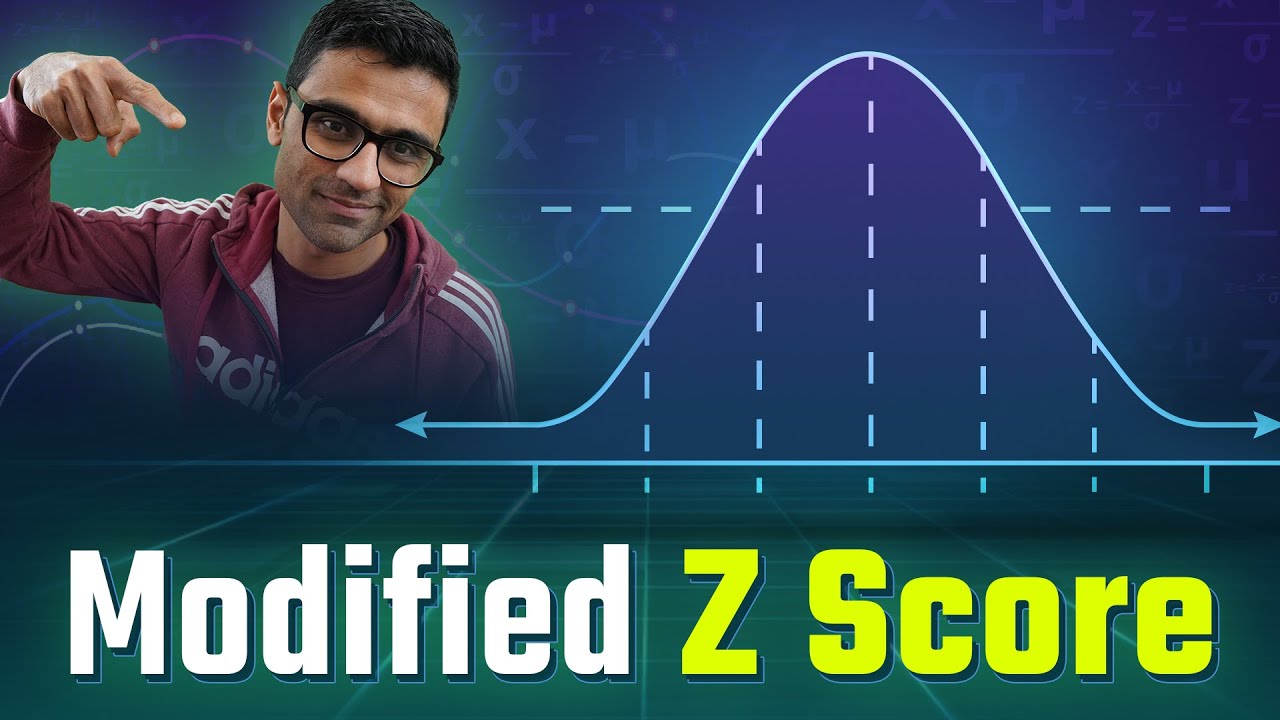Median, Mean, Mode, Percentile | Math, Statistics for data science, machine learning
TLDRThis informative video script delves into the concepts of median, mode, and percentile, emphasizing their significance in data science and machine learning. It illustrates how these statistical measures can guide decisions, such as opening a luxury car showroom, by accurately reflecting data without being skewed by outliers. The script also explains how to handle missing values and remove outliers using percentiles. Practical Python code is provided for applying these concepts, and an exercise is suggested for further practice using an Airbnb dataset.
Takeaways
- 📊 Understanding key statistical concepts like median, mode, and percentile is crucial for data analysis in fields like data science and machine learning.
- 🏢 In the context of opening a luxury car showroom, the median income of an area can provide a more accurate representation than the average, especially in the presence of outliers.
- 💸 Outliers, such as a high-income individual like Elon Musk, can significantly skew the average and lead to poor decision-making based on that skewed data.
- 🔢 The median is the middle value in a sorted list and is useful for handling data with an even number of points by averaging the two middle values.
- 📈 Percentiles help in understanding the distribution of data points, with the 50th percentile (median) dividing the data into two equal halves.
- 📊 The interquartile range (IQR), which is the range between the 25th and 75th percentiles, is a useful measure for data dispersion and can help in outlier detection.
- 🚫 Using the average in the presence of outliers can lead to incorrect estimations, as demonstrated by the example of estimating Sofia's income based on a skewed average.
- 🔄 For handling missing values in data, the median can be a better estimate than the average, especially when outliers are present in the dataset.
- 🛠️ In Python, the pandas library provides functions like `describe()` and `quantile()` to easily calculate median, percentiles, and other descriptive statistics.
- 🔍 Outliers can be removed from a dataset using percentiles, for example, by eliminating values above the 99th percentile.
- 📝 The mode, the most frequently occurring value in a dataset, is a simple yet effective measure for certain types of data analysis, such as survey results.
Q & A
What is the significance of median in the context of opening a luxurious car showroom?
-Median is significant because it provides a more accurate representation of the central tendency of income levels when there are outliers. Using the median income instead of the average can help make better decisions about whether to open a luxury car showroom, as it is less affected by extremely high or low values.
How does an outlier affect the average income calculation?
-An outlier, such as an extremely high income like Elon Musk's, can significantly skew the average income calculation, making it much higher than the typical income level. This skewed average would not accurately represent the income distribution and could lead to poor decision-making in contexts like determining the feasibility of a luxury car showroom.
What is the definition of an outlier in the context of data analysis?
-An outlier is a data point that is very different from the rest of the data points in the dataset. It can have a significant impact on statistical measures like the mean, making them less representative of the central tendency or dispersion of the data.
How is the median calculated for an even number of data points?
-For an even number of data points, the median is calculated by taking the average of the two middle values after sorting the data in ascending order. This approach ensures that the median accurately represents the middle of the dataset.
What is the 25th percentile and how is it calculated?
-The 25th percentile is the value below which 25% of the data points fall. It is calculated by finding the position in the sorted dataset that corresponds to 25% of the total number of data points and then determining the value at that position. There can be different methods for calculating percentiles, including using the lower or higher adjacent values or interpolating between them.
What is the interquartile range (IQR) and its significance in data analysis?
-The interquartile range (IQR) is the range between the 25th and 75th percentiles of a dataset. It is a measure of the dispersion of the data and provides a sense of the spread of the middle 50% of the data points. IQR is significant because it helps in understanding the data distribution and can be used to identify outliers.
How can you use percentiles to remove outliers from a dataset?
-One approach to remove outliers using percentiles is to define a threshold, such as the 99th percentile, and remove any data points that fall above this threshold. This method helps in cleaning the dataset by eliminating values that are extremely high or low and may not represent the typical behavior of the data.
What is the mode and how does it relate to everyday life?
-The mode is the most frequently occurring value in a dataset. It is a measure of central tendency that can be easily understood and applied in everyday life. For example, in a team deciding on a restaurant, the mode (most voted option) would be the choice that occurs most often.
Why is it important to handle missing values in a dataset?
-Handling missing values is crucial because it can significantly impact the accuracy of any analysis or predictions made from the dataset. Filling missing values with appropriate estimates, such as the median, helps maintain the integrity of the data and ensures more reliable outcomes.
How can you fill missing values in a dataset using Python and Pandas?
-In Python with Pandas, you can fill missing values by using functions like `fillna()` with the median or mean value of the dataset. For example, `df.income.fillna(df.income.median())` would replace missing income values with the median income value from the dataset.
What is the exercise provided in the script, and where can it be found?
-The exercise involves using the Airbnb New York dataset available on Kaggle to remove outliers using appropriate percentiles. The exercise and its solution can be found in the video description where a link is provided for downloading the dataset and accessing the solution.
Why should median rather than mean be used to fill missing values when outliers are present?
-When outliers are present, using the mean to fill missing values can lead to overestimation of the typical values in the dataset because the mean is influenced by extreme values. The median, on the other hand, is a more robust measure that is less affected by outliers, making it a better choice for filling in missing values in such cases.
Outlines
📊 Introduction to Median, Mode, and Percentile
This paragraph introduces the concepts of median, mode, and percentile, emphasizing their importance in data science and machine learning. It uses the example of opening a luxury car showroom in Monroe township, New Jersey, to illustrate how understanding the median income level of an area can inform business decisions. The paragraph also discusses the limitations of using the average when outliers are present and demonstrates how the median provides a more accurate representation of central tendency in such cases. Additionally, it touches on the use of median in handling missing values in machine learning models.
📈 Understanding and Calculating Percentiles
This paragraph delves into the concept of percentiles, explaining how they are calculated and their significance in data analysis. It describes the 50th percentile as the median and introduces the idea of using percentiles to identify and remove outliers from a dataset. The paragraph provides a step-by-step explanation of calculating different percentiles, such as the 25th, 75th, and 100th, using a hypothetical income dataset. It also introduces the interquartile range (IQR) and its role in data science, as well as the application of percentiles in exam scoring systems.
🔢 Mode and Its Application in Real Life
The paragraph defines mode as the most frequently occurring value in a dataset and relates it to everyday scenarios, such as choosing a restaurant for a team lunch. It then transitions into a practical demonstration of how to use Python and pandas to handle data, specifically to remove outliers using percentiles. The example given involves removing an outlier income value (attributed to Elon Musk) from a dataset by setting a threshold at the 99th percentile. The paragraph also provides a link to a website for further understanding of percentile calculation.
🛠️ Data Cleaning: Filling Missing Values
This paragraph focuses on the data cleaning process, particularly on filling missing values using the median instead of the mean when outliers are present. It illustrates this by creating a missing value in the dataset and then filling it with the median income to avoid skewing the data. The paragraph emphasizes the importance of using the median for filling missing values in the presence of outliers and demonstrates how to implement this in Python using pandas. It concludes with an exercise for the viewer to practice outlier removal and data cleaning using an Airbnb New York dataset.
Mindmap
Keywords
💡Median
💡Outlier
💡Percentile
💡Data Science
💡Machine Learning
💡Descriptive Statistics
💡Loan Approval Model
💡Interquartile Range (IQR)
💡Mode
💡Data Cleaning
💡Python
Highlights
The discussion begins with a simple example to explain median, mode, and percentile in the context of data science and machine learning.
Median is introduced as a better measure than average when dealing with skewed data due to outliers.
The concept of outliers is explained with the hypothetical example of Elon Musk's income skewing the average income of a town.
Median is defined as the middle value of a data set and is used for decision-making in scenarios like opening a car showroom.
When the data set has an even number of data points, the median is calculated as the average of the two middle values.
Percentiles are introduced as a way to understand the distribution of data points below a certain value.
The 50th percentile is equivalent to the median, dividing the data set into two equal halves.
Interquartile Range (IQR) is explained as the range between the 25th and 75th percentiles, useful for data analysis.
Outliers can be removed using percentiles, for example, by eliminating values above the 99th percentile.
Mode is introduced as the most frequently occurring value in a data set, with a practical example of a team choosing a restaurant based on the mode of preferences.
Python code is provided to demonstrate the use of percentile for outlier removal and filling missing values with the median.
The importance of data cleaning, including outlier removal and filling missing values, is emphasized in the data science process.
The video includes an exercise for the viewer to practice using percentiles to remove outliers from an Airbnb New York dataset.
The use of median instead of mean for filling missing values is recommended when dealing with skewed data.
The video concludes with a call to action for viewers to attempt the exercise on their own before looking at the provided solution.
Transcripts
Browse More Related Video

Simple explanation of Modified Z Score | Modified Z Score to detect outliers with python code

Live Day 2- Basic To Intermediate Statistics

Introduction to Statistics

Math 119 Chapter 3 part 2

Statistics Lecture 3.2: Finding the Center of a Data Set. Mean, Median, Mode

Percentiles, Quantiles and Quartiles in Statistics | Statistics Tutorial | MarinStatsLectures
5.0 / 5 (0 votes)
Thanks for rating: